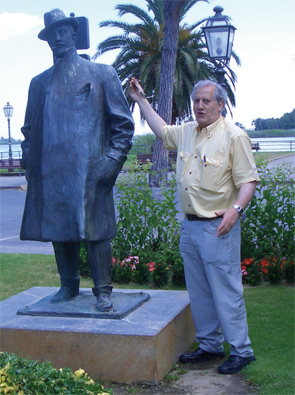After receiving his medical degree in 1966 from Harvard Medical School, Dr. Pincus began a surgical residency. But history intervened: It was the time of the Vietnam War, and he joined the Public Health Service to work at the National Institutes of Health (NIH) in lieu of active military duty. While at the NIH, he conducted immunology research under the directorship of Norman Talal, MD, and devised a simpler version of an earlier DNA antibody test that could be used in the clinic to diagnose lupus. “And it worked!” says Dr. Pincus. “That study was published in The New England Journal of Medicine in 1969 and actually, in a sense, set the stage for the rest of my career.”
Stanford and Beyond
After his four years of public health service at the NIH, he applied for an internal medicine residency at Stanford. He recalls that Dr. Holman was very gracious about his application and did not require any “remedial” training (as other programs had suggested) after his hiatus from a surgical residency. “That was no problem,” says Dr. Holman. “We didn’t believe in disciplinary lines or required training programs or the like. It was no problem for us to take a smart, engaging surgeon and say, ‘OK, you want to be a doctor in medicine? That’s fine with us.’ ”
In the early 1970s, rheumatology was just emerging as a distinct discipline, “We were interested in people who brought skills and potentially different valuable ideas,” says Dr. Holman, “and [Dr. Pincus] fit right into that category.” After Stanford, Dr. Pincus returned to Cornell for his second year of residency to be near Dr. Christian, who had moved from Columbia to the Hospital for Special Surgery. When he applied for a rheumatology fellowship, he was told that Robert Good, MD, PhD, at Memorial Sloan-Kettering was offering a position as assistant professor in molecular virology research, which paid $15,000 more than a fellowship. With a new baby to provide for, Dr. Pincus opted for the assistant professorship.
He continued his work on deciphering genetic control of viruses at the cellular level at the University of Pennsylvania’s Wistar Institute in Philadelphia as a professor in molecular virology, where was gradually introduced to the joys of clinical work.

Treasure in a Jim Beam Carton
In 1980, Dr. Pincus accepted an invitation to develop a rheumatology program at Vanderbilt University in Nashville, and began commuting from Philadelphia to Nashville every Wednesday. Coincidentally, in April of that year, James F. Fries, MD, professor of medicine at Stanford University School of Medicine (Calif.), first publication of the HAQ appeared in Arthritis & Rheumatism. In fact, Dr. Pincus recalls reading the article on the plane to Nashville: “I regarded this as a clinical tool that might improve clinical medicine.”
